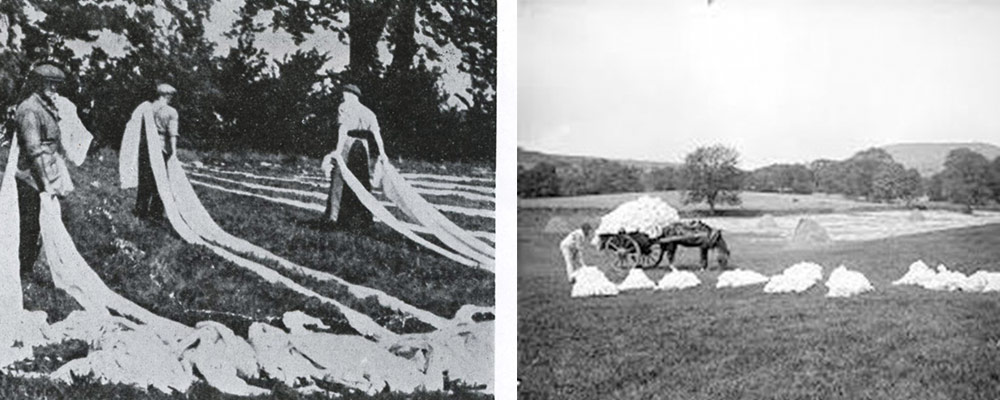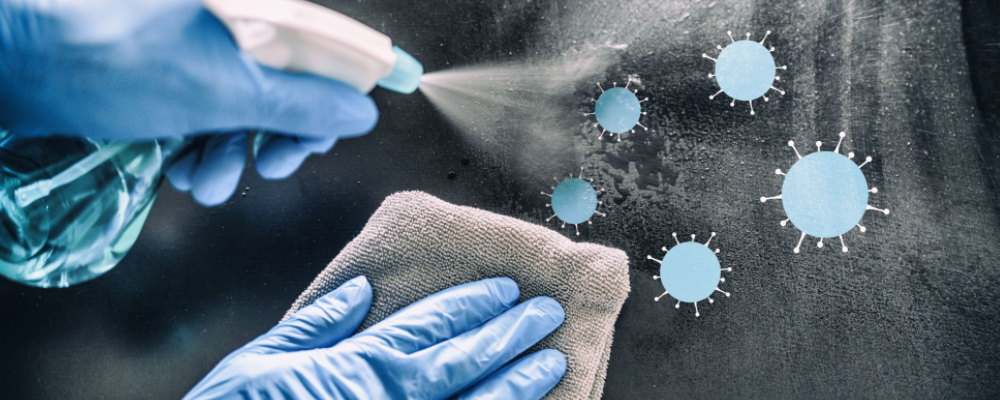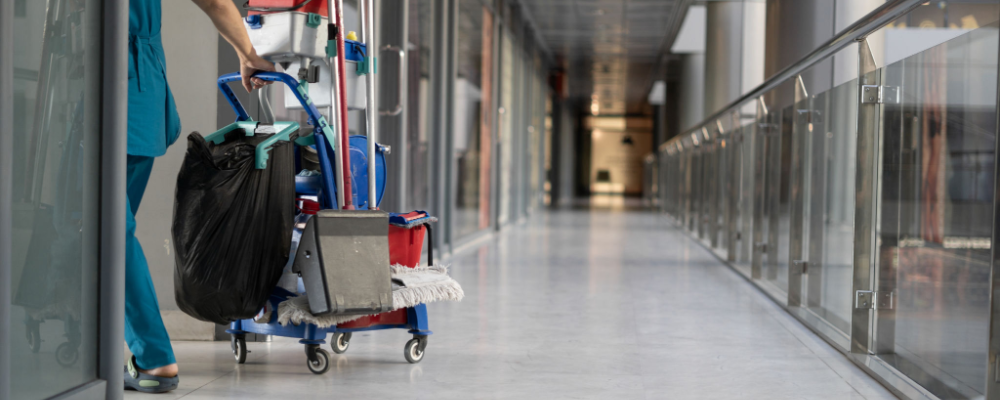Germicidal Bleach vs. Regular Bleach: A Deep Dive into their Differences and Uses
The Journey of Bleach: From Historic Origins to Modern Uses
Before diving into the history and science of bleach, it’s important to understand one of the most common points of confusion: Is germicidal bleach the same as disinfecting bleach?
While both are used for killing germs, they differ in strength, purpose, and certification. Here’s a quick comparison to help clarify:
| Feature | Germicidal Bleach | Disinfecting Bleach |
| Primary Purpose | High-level disinfection in healthcare, labs, critical environments | General surface disinfection in households and businesses |
| Strength | Stronger, often higher concentration of sodium hypochlorite | Moderate strength; lower concentration |
| EPA Registration | Yes, registered as a hospital-grade disinfectant | Yes, but may not meet hospital-grade standards |
| Typical Use Cases | Hospitals, labs, nursing homes, medical laundry | Kitchens, bathrooms, schools, gyms |
| Formulation | May include surfactants and stabilizers for professional use | Basic sodium hypochlorite + water |
| Effectiveness | Proven to kill a broad range of bacteria, viruses, fungi | Effective for most common household pathogens |
| Fabric Safety | Safe only on bleach-approved fabrics (white linens, etc.) | Somewhat safer for household fabrics, still use caution |
| Price | Higher due to professional-grade formula | Generally more affordable and widely available |
The Historic Evolution of Bleach
Bleach, a common name in every household, has a rich history. Ancient civilizations utilized rudimentary bleaching agents to whiten fabrics, but it wasn't until the 18th century that we saw the advent of chlorine-based bleaches. Fast forward to the 20th century, and you'll notice a division between germicidal and regular bleach.
Tracing back the origins
- Ancient civilizations utilized basic bleaching agents for whitening fabrics.
- The 18th century saw the introduction of chlorine-based bleaches.
- By the 20th century, a clear distinction between germicidal and regular bleach began to emerge.

Key milestones
- Chlorine's discovery paved the way for modern bleach formulations.
- The world wars saw an increased need for disinfection, pushing germicidal bleach into the limelight.
- As health became paramount, bleach formulations tailored to specific needs, such as germ-killing, took center stage.
Chemical Composition Differences
At a molecular level, germicidal and regular bleaches significantly differ. While regular bleach primarily contains sodium hypochlorite, germicidal variants often incorporate additional disinfecting agents, amplifying their microbial-killing prowess.
Specific Use Cases and Applications
The choice between germicidal and regular bleach mainly depends on the task at hand. Germicidal bleach is predominantly used in medical settings to prevent disease spread. It's essential for scenarios demanding high levels of sanitization, like labs. On the other hand, regular bleach is a staple for household cleaning and is commonly used in commercial spaces for general cleaning and fabric whitening.
Germicidal bleach
- Used predominantly in medical settings to prevent disease spread.
- Essential in scenarios demanding high levels of sanitization, like labs.
Regular bleach
- A staple for household cleaning.
- Common in commercial spaces for general cleaning and fabric whitening.

Effectiveness in Killing Pathogens
Not all bleaches are created equal when it comes to battling microbes.
Bacteria, viruses, and fungi
- Germicidal bleach has a proven track record against a wide range of pathogens.
- Regular bleach, while effective, might not always reach the high efficacy levels of its germicidal counterpart.
Scientific backing
- Numerous studies validate germicidal bleach's superior disinfection abilities.
- Its strength lies in its enhanced formulation, optimized for microbial combat.
Safety and Health Implications
Understanding potential health risks and safety precautions is paramount when using bleach. Misuse of potent germicidal bleach can pose risks like skin irritations or respiratory distress. Regular bleach, although milder, can still lead to health complications if not handled correctly. Always use bleach in well-ventilated areas, wear gloves and protective eyewear, and never mix it with other chemicals, especially ammonia.
Environmental Impact
Bleach's environmental impact is another critical factor to consider. Germicidal bleach requires careful disposal due to its potent chemicals and can harm aquatic life. Regular bleach breaks down more readily in the environment but can still threaten aquatic ecosystems if released in large quantities.
Ecological ramifications
Both types contribute to the formation of organochlorines, potentially harmful compounds, when broken down.
Their effect on soil and water ecosystems is an ongoing area of study.
Cost Implications and Market Trends
Your pocket feels the difference, but which bleach reigns supreme in the market?
Price comparisons
- Germicidal bleach: Typically priced higher due to its specialized formulation.
- Regular bleach: More cost-effective and readily available.
Market dynamics
- Germicidal bleach wipes have seen a surge in popularity, especially in medical settings.
- Regular bleach remains a household staple globally.

Shelf Life and Storage Recommendations
For optimal performance, storage is key.
Lifespan of bleaches
- Germicidal bleach: Retains effectiveness for around 6 months to a year.
- Regular bleach: Generally effective for up to 6 months.;
Storage best practices
- Store in a cool, dry place, away from sunlight.
- Keep containers sealed tightly.
Potential Risks and Misconceptions
With bleach, misconceptions abound. The truth is, all bleaches don't disinfect equally, and they aren't interchangeable in every scenario. Always remember to use the right type for the right task.
Future Innovations and Research
The bleach saga is far from over. What’s on the horizon?
Technological advancements
- Introduction of eco-friendlier bleach alternatives.
- Formulations with extended shelf life and potency.
Ongoing research
- Studies into reducing bleach's environmental impact.
- Exploration of natural disinfectants with comparable efficacy.
FAQ's
What is the strongest bleach for cleaning?
The strongest bleach for cleaning, particularly for disinfecting, is germicidal bleach. This type of bleach has a specialized formulation that enhances its microbial-killing capabilities. It's specifically designed to combat a wide range of pathogens and is often used in medical and lab settings where high levels of sanitization are required. However, for everyday household cleaning tasks, regular bleach can be effective. It's essential to always read the product's label to ensure its suitability for the intended cleaning purpose and to use it safely and effectively.
How do you use germicidal bleach
To use germicidal bleach effectively:
- Read the Label: Always start by reading the label for specific instructions and safety guidelines.
- Dilution: For most disinfecting tasks, dilute the bleach as recommended on the product label. A common recommendation is one cup of bleach to a gallon of water.
- Safety First: Wear gloves and ensure the area is well-ventilated. Avoid contact with eyes, skin, and clothing.
- Application: Apply the solution to the surface using a cloth or sponge. Make sure the surface remains wet with the solution for the recommended contact time (often around 5 minutes).
- Rinsing: For food contact surfaces (like countertops), rinse thoroughly with fresh water after the contact time.
- Storage: Store the bleach bottle upright, in a cool, dry place out of the reach of children and pets, and away from direct sunlight.
- Disposal: If you have leftover diluted solution, dispose of it by pouring it down the drain and running water.&
- Precaution: Never mix Clorox germicidal bleach or any bleach with ammonia or any other cleaning products, as this can release harmful gases.
Remember, it's essential to always follow the manufacturer's instructions and safety precautions when using Clorox germicidal bleach or any disinfectant product.
How do you dilute germicidal bleach for laundry?
When using germicidal bleach for laundry, it's crucial to dilute it properly to ensure effective disinfection without damaging your fabrics. Here's a general guideline:
- Check the Label: Always begin by reading the product label. The manufacturer will often provide specific dilution instructions for various uses, including laundry.
- Preparation: Use a separate container to mix the bleach and water. Never pour undiluted bleach directly onto clothing.
- Dilution Ratio: For a standard-sized washing machine, you typically need around ¾ cup of germicidal bleach for a full load. Mix this with water based on the product's guidelines. If your washing machine has a bleach dispenser, pour the diluted solution into it.
- Loading Laundry: Load your laundry into the washing machine. Ensure that the clothing is evenly distributed and not overloaded.
- Washing: Start your washing cycle, preferably with warm water for best results. Add your regular detergent as you normally would.
- Rinsing: After the washing cycle, let the machine rinse the clothes thoroughly to remove any bleach residues.
- Drying: Dry your clothes as you normally would, either in a dryer or by air drying.
- Precaution: Be sure to wear gloves when handling bleach to protect your skin. Also, always work in a well-ventilated area to prevent inhaling any fumes.
Lastly, it's essential to note that germicidal bleach can be stronger than regular household bleach. Thus, always err on the side of caution and start with a smaller amount if you're uncertain. Over time, you'll get a sense of the right amount for your specific laundry needs.
What is the best bleach for disinfecting?
The best bleach for disinfecting is germicidal bleach. Germicidal bleach has a formulation specifically designed to kill a broader spectrum of microorganisms, including bacteria, viruses, and fungi. Its enhanced microbial-killing capabilities make it a preferred choice for environments where high levels of disinfection are required, such as hospitals, laboratories, and other healthcare settings. When choosing a bleach for disinfection, it's crucial to:
Check the EPA Registration: Ensure that the bleach is registered with the Environmental Protection Agency (EPA) as a disinfectant. The label should contain an EPA registration number.
Read the Label: The label provides important information on the bleach's intended use, dilution guidelines, contact time (how long the surface should remain wet), and safety precautions.
Consider the Application: While germicidal bleach is highly effective, it might be overkill for everyday household tasks. Regular household bleach can be effective for general home disinfecting when used correctly.
Safety First: Always use bleach in a well-ventilated area, wear protective gloves, and avoid mixing it with other chemicals.
While germicidal bleach stands out as the top contender for disinfection purposes, the best bleach for you will depend on your specific needs and the context in which you are using it. Always prioritize safety and follow the manufacturer's guidelines.
What is the difference between the different types of bleach?
Bleach varieties are distinguished by their composition, purpose, and strength. Here are the primary types and their differences:
Regular Household Bleach (Sodium Hypochlorite):
- Primarily used for laundry whitening, stain removal, and general disinfection.
- Typically contains 5-6% sodium hypochlorite.
Germicidal Bleach: Specifically designed for high-level disinfection. Often used in healthcare, lab settings, or places requiring stringent sanitization. May contain a higher concentration of sodium hypochlorite compared to regular bleach, amplifying its disinfecting power.
Oxygen Bleach (Oxy Bleach): Uses oxygen as its active ingredient (commonly hydrogen peroxide). Safe for colored fabrics and more environmentally friendly. Effective in stain removal and brightening.
Liquid Chlorine Bleach: Used mainly for disinfecting water, especially in pools. Contains a higher concentration of sodium hypochlorite than regular household bleach.
Hydrogen Peroxide: Not technically a bleach but has bleaching properties. Used as a disinfectant, antiseptic, and also for lightening hair.
Non-Chlorine Bleach: Doesn't contain chlorine or sodium hypochlorite. Primarily used for delicate fabrics and colored clothes. In essence, the primary difference lies in their chemical compositions and their intended uses. It's crucial to choose the right type based on the task at hand and always read the product label for specific usage and safety instructions.
What are the different types of bleach for cleaning?
Bleach, in its various forms, serves as a potent cleaning and disinfecting agent. Here's a breakdown of the different types of bleach suitable for cleaning:
- Regular Household Bleach (Sodium Hypochlorite): Widely used for cleaning bathrooms, kitchens, and other surfaces. Effective in eliminating mold, mildew, and a variety of pathogens.
- Germicidal Bleach: Formulated specifically for high-level disinfection. Suitable for environments requiring stringent sanitization, like hospitals and labs.
- Oxygen Bleach (Oxy Bleach): A less aggressive bleach, often powder-based. Ideal for colored fabrics and surfaces without risk of discoloration. Also effective against mold and mildew.
- Non-Chlorine Bleach: A gentler bleach suitable for colored fabrics and delicate surfaces. Effective in stain removal and disinfection.
- Hydrogen Peroxide: Acts as a disinfectant and cleaner. Suitable for surfaces like countertops, cutting boards, and even as a mouthwash in diluted form.
- Calcium Hypochlorite: Often in granular or tablet form. Used primarily for disinfecting water, like in swimming pools, but can be used for cleaning surfaces when properly diluted.
- Sodium Percarbonate: Found in many oxygen bleach products. Activates when mixed with water, releasing oxygen that helps in cleaning and stain removal.
Each type of bleach has its unique properties and applications. When selecting bleach for cleaning, it's essential to consider the surface or fabric being cleaned, the type of stains or contaminants, and any safety or environmental concerns. Always use the product as directed, taking all necessary precautions.
Can you use germicidal bleach in laundry?
Yes, you can use germicidal bleach in laundry, but with certain precautions and considerations. Germicidal bleach is a more potent variant designed to eliminate a wide array of microorganisms, including bacteria, viruses, and fungi, making it especially useful in healthcare settings or situations requiring stringent disinfection. Here’s how to use germicidal bleach safely and effectively in your laundry:
Check Fabric Compatibility: Before using germicidal bleach on any fabric, it's essential to check the garment label for any bleach warnings. Germicidal bleach is generally safe for use on white, bleach-safe fabrics but could damage colored materials or delicate fabrics.
Dilute Appropriately: Follow the manufacturer's instructions for diluting germicidal bleach for laundry use. Over-concentration can damage fabrics or cause skin irritation. Use in a Well-Ventilated Area: To prevent inhalation of fumes, ensure your laundry area is well-ventilated when adding germicidal bleach to the wash.
Measure Carefully: Use the recommended amount of germicidal bleach for your laundry load size. Typically, you would add it to the bleach dispenser of your washing machine to ensure it's dispensed correctly during the wash cycle.
Avoid Mixing Chemicals: Never mix germicidal bleach with other laundry additives or chemicals, as this can produce harmful gases.
Follow Contact Time Guidelines: For disinfecting purposes, the laundry should be soaked in the germicidal bleach solution for a specific period, as recommended by the product guidelines, before completing the wash cycle.
While germicidal bleach is highly effective for disinfecting purposes, its use in everyday laundry might be more than necessary and should be reserved for situations requiring the highest level of sanitation, such as washing linens contaminated with bodily fluids or after illness in the home. Always prioritize safety by wearing gloves when handling germicidal bleach and by following the dilution and usage instructions provided by the manufacturer.
Does germicidal bleach whiten clothes?
Yes, germicidal bleach can whiten clothes, especially white fabrics. However, it’s primarily designed for disinfection, so it may be harsher than regular laundry bleach. Always check the fabric care label and use as directed to avoid damage.
Recent Posts
-
Fragrance-Free vs Scented: Build an Allergy-Safe Cleaning Program that Still Works
When "Clean" Becomes a Complaint You know the scene: your custodial team disinfects the office overn …Dec 05, 2025 -
How to Prevent Slippery Floors After Disinfecting: Custodian Safety Guide
When Clean Turns Dangerous You've just finished disinfecting the lobby floor. It's spotless. Germ-fr …Nov 28, 2025 -
Sensitive Skin Cleaning: Low Irritant Disinfectants, Gloves, and Hand Care Stations
Facility managers often report that skin irritation ranks among the top three health complaints from …Nov 14, 2025




